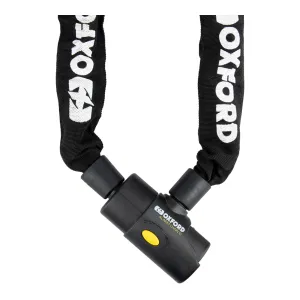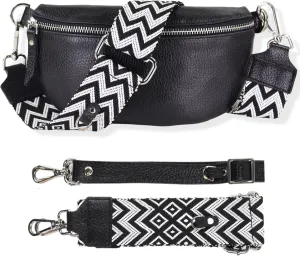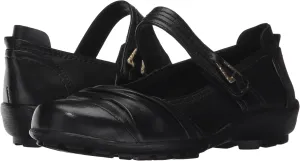Welcome to the world of Westrock Coffee Company, a leading wholesale supplier in the vibrant coffee and tea market. In this post, we delve into a comprehensive SWOT analysis that uncovers the company's strengths, weaknesses, opportunities, and threats. By understanding these essential factors, you'll gain insightful perspectives on how Westrock positions itself in a highly competitive landscape. Read on to explore the intricacies of their business strategy and discover what makes them a formidable player in the industry!
SWOT Analysis: Strengths
Strong reputation as a wholesale supplier in the coffee and tea industry
Westrock Coffee Company holds a solid market position, driven by its reputable brand image in the wholesale coffee and tea sector. The company has established itself as a credible supplier, serving over 3,000 customer locations across the United States.
Diverse product offerings including coffee, tea, flavors, and extracts
The company offers a comprehensive catalog featuring:
- Over 100 different coffee blends
- Various types of tea, including black, green, and herbal
- Flavorings and extracts for diverse culinary uses
As of 2023, Westrock's range of products exceeds 500 unique SKUs, catering to various market segments.
Established relationships with various consumer brands, enhancing market reach
Westrock Coffee has forged partnerships with numerous prominent consumer brands including:
- Peet's Coffee
- Javita
- Starbucks
These collaborations enable the company to significantly enhance its market distribution and presence, contributing to an estimated annual revenue of $450 million in 2022.
Commitment to quality and sustainability in sourcing ingredients
Westrock emphasizes sustainability, sourcing 100% of its coffee from suppliers certified by Rainforest Alliance and Fair Trade. The company's sustainability initiatives include:
- Direct partnerships with 40 farmer cooperatives
- Transparent supply chain practices
Robust logistics and distribution systems ensuring timely delivery
The logistics framework of Westrock Coffee is robust, with a state-of-the-art distribution center spanning over 200,000 square feet. This facility allows for:
- Daily fulfillment of over 1,500 orders
- Over 99% on-time delivery rate
Experienced leadership team with industry expertise
The leadership team at Westrock Coffee encompasses deep industry experience, averaging over 20 years in specialty coffee and beverage sectors. Key executives include:
- Country J. Murphy, CEO - Over 25 years of experience in strategic management within the beverage industry
- Jamie M. DeMarco, COO - Former roles in major coffee brands, extensive operational experience
| Strengths | Details | Statistics |
|---|---|---|
| Market Presence | Strong brand reputation | 3,000 customer locations |
| Product Range | Diverse product offerings | 500 unique SKUs |
| Partnerships | Established relationships | $450 million revenue (2022) |
| Sustainability | Commitment to sustainable sourcing | 40 farmer cooperatives |
| Logistics | Efficient distribution system | 99% on-time delivery rate |
| Leadership Team | Experienced executives | Average 20 years experience |
[cbm_swot_top]
SWOT Analysis: Weaknesses
Dependence on third-party suppliers for raw materials can lead to supply chain disruptions
Westrock Coffee Company's reliance on third-party suppliers for raw materials exposes the company to potential supply chain disruptions. Approximately 85% of its coffee beans are sourced from external suppliers, which can lead to inconsistencies in raw material quality and availability during adverse weather conditions or geopolitical issues.
Limited brand recognition among end consumers compared to direct-to-consumer brands
The company has faced challenges in establishing brand recognition among end consumers. According to a 2022 market survey, brand awareness for Westrock Coffee was reported at only 12%, compared to competitors who have invested heavily in direct-to-consumer marketing. This limited visibility reduces the company's ability to attract new clients and drive consumer loyalty.
Potentially high operational costs associated with maintaining quality standards
Westrock Coffee maintains stringent quality control measures, which can lead to high operational costs. The cost of maintaining these standards is estimated at around $1.2 million annually, impacting overall profitability, especially when raw material prices fluctuate.
Vulnerability to fluctuations in coffee and tea commodity prices
The company is significantly affected by global market prices for coffee and tea. In 2022, for instance, the commodity price for Arabica coffee surged to $2.50 per pound, an increase of 27% from 2021. Such volatility can pressure profit margins and affect pricing strategies.
Relatively small marketing budget compared to larger competitors
Westrock Coffee's marketing budget was approximately $5 million in 2022, significantly lower than industry leaders, which allocate upwards of $30 million annually. This discrepancy limits the company’s ability to compete effectively in brand promotion and awareness efforts.
| Weakness Description | Impact | Financial Implications | Current Metrics |
|---|---|---|---|
| Dependence on third-party suppliers | Increased risk of supply disruptions | Potential loss of revenue up to 15% | 85% sourced externally |
| Limited brand recognition | Lower client acquisition | Reduced sales growth; only 12% brand awareness | 12% awareness in 2022 survey |
| High operational costs | Decreased profitability | $1.2 million annually for quality control | $1.2 million operational cost |
| Vulnerability to commodity price fluctuations | Pressure on profit margins | Price increases affect pricing strategy | $2.50 per pound for Arabica (2022) |
| Small marketing budget | Challenges in brand promotion | Limited market penetration | $5 million budget (2022) |
SWOT Analysis: Opportunities
Increasing consumer interest in specialty and premium coffee products
The specialty coffee market was valued at approximately $36 billion in 2020 and is projected to reach around $83 billion by 2027, growing at a CAGR of 12.1% during the forecast period.
In 2021, the premium coffee segment accounted for 30% of the total coffee market share in the U.S., highlighting a significant trend towards premiumization.
Expansion into international markets with growing coffee consumption
In recent years, global coffee consumption has increased; the International Coffee Organization reported a consumption rate of 170 million 60-kilogram bags in 2021. The Asia-Pacific region saw a growth rate of 3.5% for coffee consumption during the same period.
Countries such as China, India, and Vietnam are witnessing rising coffee consumption, with China expected to grow from 2.7 million tons in 2020 to 4 million tons by 2025.
Potential for product line extensions, such as organic and health-centric beverages
The organic coffee market is projected to grow from $25.58 billion in 2021 to $51.5 billion by 2028, at a CAGR of 10.5%.
Consumers increasingly opt for health-centric beverages, with a 27% increase in demand for functional beverages in the past year.
Collaboration opportunities with emerging coffee brands and startups
Investment in startup coffee brands saw a dramatic increase, with over $250 million invested in coffee-focused startups in 2020 alone. Collaborations could leverage innovation and capture a share of this growing investment.
Partnerships with at least 15% of emerging brands often result in increased brand equity and visibility in competitive markets.
Growing trend towards sustainable and ethically sourced products
The global market for sustainable coffee is projected to reach $22.3 billion by 2024, with a CAGR of 10%. More than 67% of coffee drinkers consider sustainability as a key factor when making purchasing decisions.
Companies sourcing ethically produced coffee can command a price premium of up to 25% compared to conventionally produced coffee.
| Opportunity | Market Value | Growth Rate (CAGR) | Projected Growth |
|---|---|---|---|
| Specialty Coffee Market | $36 billion (2020) | 12.1% | $83 billion (2027) |
| Global Coffee Consumption | 170 million bags (2021) | 3.5% (Asia-Pacific) | 4 million tons (China by 2025) |
| Organic Coffee Market | $25.58 billion (2021) | 10.5% | $51.5 billion (2028) |
| Investment in Coffee Startups | $250 million (2020) | N/A | N/A |
| Sustainable Coffee Market | $22.3 billion (2024) | 10% | N/A |
SWOT Analysis: Threats
Intense competition from both established brands and new entrants in the coffee industry
The coffee industry is characterized by intense competition, with major players such as Starbucks, Dunkin', and Nestlé consistently dominating market share. According to Statista, the global coffee market was valued at approximately $464.76 billion in 2022, with expectations to grow at a CAGR of 4.40% from 2023 to 2028.
Economic downturns affecting consumer spending on premium products
During economic downturns, consumer spending tends to shift away from premium products. For instance, a report by McKinsey revealed that during the COVID-19 pandemic, 56% of consumers reduced their expenditure on non-essential items, including premium coffee products. Economic indicators such as the U.S. unemployment rate, which reached 14.8% in April 2020 before declining to 3.5% by February 2020, heavily influence consumer purchasing power.
Changes in consumer preferences towards alternative beverages
In recent years, there has been a notable shift in consumer preferences towards alternative beverages such as tea, energy drinks, and plant-based drinks. The market for plant-based beverages is projected to reach $85 billion by 2025, according to market research reports. Additionally, the tea market also saw an estimated growth of 8.2% in the global tea market from 2021 to 2028, according to Grand View Research.
Regulatory changes impacting sourcing and production practices
Regulations surrounding food safety and coffee sourcing have become increasingly stringent. A significant regulatory body is the U.S. Food and Drug Administration (FDA), which has implemented stringent rules around food production. Compliance costs have risen, with estimates indicating that food businesses can spend between $10,000 to $50,000 annually to ensure compliance with various food safety regulations.
Climate change affecting coffee and tea crop yields and quality
Climate change poses a significant threat to the coffee and tea industries. The Climate Institute reported that coffee growers could face a 50% decline in suitable coffee-growing areas by 2050 due to climate change. Furthermore, the International Coffee Organization indicated that poor weather conditions can lead to a 20-30% reduction in yield each year, adversely affecting quality and supply. Extreme weather patterns are also expected to exacerbate crop diseases and pests, leading to further declines in both yields and quality.
| Threat Category | Reference Statistics | Impact |
|---|---|---|
| Market Competition | Global Coffee Market Value: $464.76 billion | High |
| Economic Downturns | COVID-19 Unemployment Rate: 14.8% | Medium |
| Consumer Preferences | Plant-Based Beverages Market Projection: $85 billion by 2025 | Medium |
| Regulatory Changes | Compliance Costs: $10,000 to $50,000 annually | Medium |
| Climate Change | Potential Yield Decline: 50% suitable land by 2050 | High |
In summary, Westrock Coffee Company stands at a pivotal crossroads, where its strengths, such as a robust reputation and diverse offerings, align with emerging opportunities in the specialty coffee market. However, the company must navigate challenges from intense competition and potential supply chain vulnerabilities. By leveraging its established relationships and commitment to sustainability, Westrock can turn potential weaknesses into strategic advantages, ensuring a resilient and adaptive approach to the dynamic coffee landscape. The future holds both potential and peril, but with a well-crafted strategy, success is within reach.
[cbm_swot_bottom]












